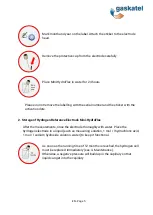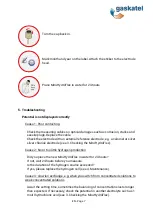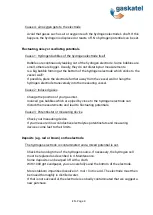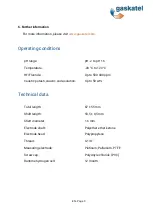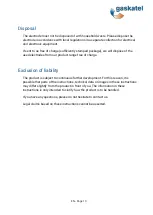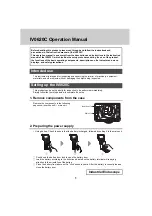
EN - Page 8
Cause 4: air/oxygen gets to the electrode
Avoid that gases such as air or oxygen reach the hy
drogen electrode’s shaft. If this
happens the hydrogen is displaced or reacts off. No hydrogen potential can be set.
Fluctuating, noisy or oscillating potentials
Cause 1: Hydrogen bubbles of the hydrogen electrode itself
Bubbles are continuously leaking out of the hydrogen electrode. Some bubbles are
small, others are bigger. Usually, they do not disturb your measurements.
Is a big bubble forming at the bottom of the hydrogen electrode which sticks to the
vessel wall?
If possible, place the electrode further away from the vessel wall or hang the
hydrogen electrode transversely into the measuring vessel.
Cause 2: Induced gases
Change the position of your gas inlet.
Induced gas bubbles which are piped by close to the hydrogen electrode can
disturb the measurements and lead to fluctuating potentials.
Cause 3: Potentiostat or measuring device
Check your measuring device.
If you measure in low conductive electrolytes potentiostats and measuring
devices come fast to their limits.
Deposits (e.g. red or brown) on the electrode
The hydrogen electrode is contaminated and a mixed potential is set.
Check the running time of the hydrogen source. If necessary, the hydrogen cell
must be replaced as described in 4. Maintenance.
Some deposits can be wiped off with a cloth.
With 1000 grit sandpaper, you can carefully sand the bottom of the electrode.
More stubborn impurities dissolve in 1 mol / l nitric acid. The electrode must then
be rinsed thoroughly in distilled water.
If that is not successful, the electrode is so badly contaminated that we suggest a
new purchase.












